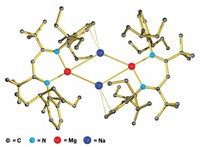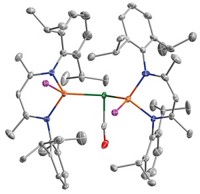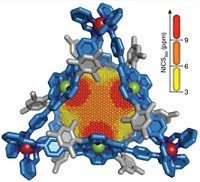Advertisement
Grab your lab coat. Let's get started
Welcome!
Welcome!
Create an account below to get 6 C&EN articles per month, receive newsletters and more - all free.
It seems this is your first time logging in online. Please enter the following information to continue.
As an ACS member you automatically get access to this site. All we need is few more details to create your reading experience.
Not you? Sign in with a different account.
Not you? Sign in with a different account.
ERROR 1
ERROR 1
ERROR 2
ERROR 2
ERROR 2
ERROR 2
ERROR 2
Password and Confirm password must match.
If you have an ACS member number, please enter it here so we can link this account to your membership. (optional)
ERROR 2
ACS values your privacy. By submitting your information, you are gaining access to C&EN and subscribing to our weekly newsletter. We use the information you provide to make your reading experience better, and we will never sell your data to third party members.
Synthesis
Capsuled Carbene
Transient intermediate is stabilized inside a cage at room temperature
by RON DAGANI
February 28, 2005
| A version of this story appeared in
Volume 83, Issue 9

ORGANIC CHEMISTRY
For the first time, a transient singlet carbene has been trapped--and stabilized--for days inside the cavity of a cage molecule at ambient temperature, according to chemists at Rutgers University.
For decades, chemists have stabilized and studied transient carbenes by creating them in frozen matrices at very low temperatures. This approach, however, limits the types of studies that can be carried out on these fleeting intermediates. Researchers also have learned how to make carbenes that are intrinsically so stable that they can be isolated and stored in a bottle. But how do you extrinsically stabilize at ordinary temperatures a carbene that normally dimerizes or reacts with nearby molecules within milliseconds?
Robert A. Moss, Ralf Warmuth, Ronald R. Sauers, and coworkers Xuejun Liu and Gaosheng Chu accomplished this by confining the carbene inside a cage structure known as a hemicarcerand [Angew. Chem. Int. Ed., published online Feb. 21, http://www3.interscience.wiley.com/cgi-bin/abstract/109930253]. They first encased 3-fluoro-3-phenoxydiazirine inside the cage and then photolyzed it to generate fluorophenoxycarbene. This particular carbene was chosen, in part, because it's unlikely to react with the cage.
Fluorophenoxycarbene does, however, react in an acid-catalyzed process with water molecules that diffuse into the hemicarcerand. But when the researchers made sure that pyridine was present in the reaction mixture to soak up any stray protons, the carbene persisted in its cage for days without any reaction.
Among the advantages of this approach, Moss points out, is that they were able to record the carbene's nuclear magnetic resonance spectra and deduce that it prefers the more compact--but less stable--cis conformation inside the cage. This approach also allows them to study how the carbene reacts with small probe species that slip into the cage--something not possible in cryogenic matrices.
Chemistry professor Matthew S. Platz of Ohio State University calls the Rutgers paper "a landmark result" and says it "will excite the organic chemistry community."





Join the conversation
Contact the reporter
Submit a Letter to the Editor for publication
Engage with us on Twitter